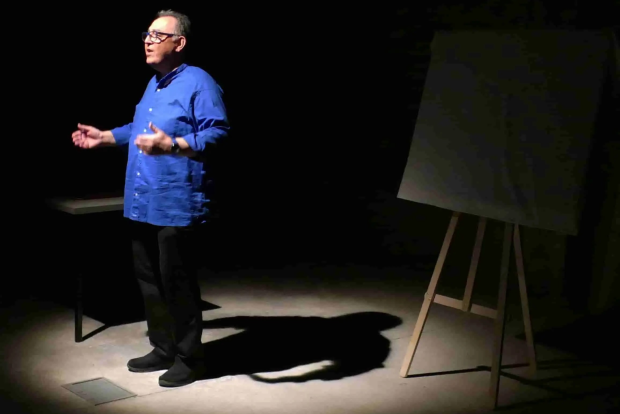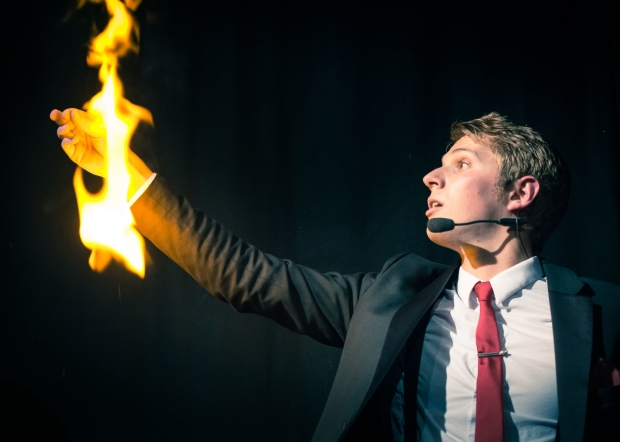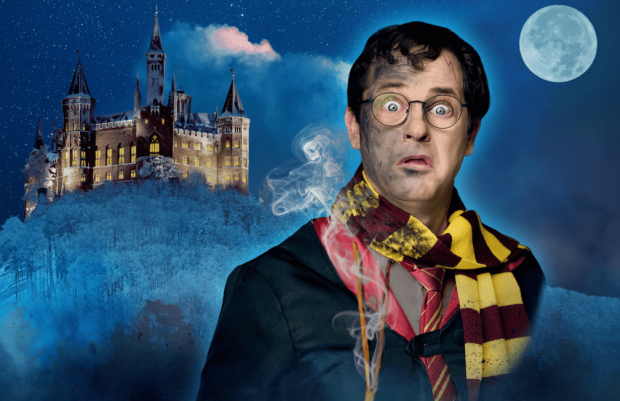☆☆☆☆
The Fringe can get pretty hectic, with shows that don’t even start until the wee hours of the morning. Many such shows are completely dead on weekday nights. The fact that Liz Toonkel could pull a whole first row at her nearly-midnight time slot on a weekday is an impressive testament to the reputation that she’s built for Magic for Animals in the brief time that’s she’s had in Edinburgh so far.
Magic for Animals is deliberately onion-like in its construction. There is little time to think that it’s going to be a standard, classic magic show. Toonkel struts out in her instantly iconic outfit and briefly plays that role, but soon makes her way to what she’s really here to talk about: animal rights (it would be a shame to reveal too much in a review beyond that). There’s a lot in the show for vegans and vegetarians in the audience to love. A highlight of Toonkel’s animal rights themed magic, and in fact one of the effects that gets at the heart of the show is her take on the kind of sleights usually seen in coin tricks but using pearls, and performed in conjunction with a discussion of the abusive nature of pearl farms.
But the true highlight of Magic for Animals is less the trickery and more the perfect, beautiful construction of the show itself. It does touch on serious themes, beyond animal rights, but Toonkel leads the audience to where she wants them to go gently, using a reassuring succession of magic tricks to wind her way to the central thesis point of her performance. Each trick and story gradually and gracefully leads her to her point, with the structure of the show functioning as the pearl shielding both audience and performer from what’s at its heart.
At the reviewed show, Toonkel played to an audience that was impressive for a weekday, but it was nevertheless an intimate performance. The close scrutiny perhaps didn’t do her magic any favors, some of the mechanics of her effects felt a little clumsy. This didn’t really affect the overall impression of the show. There’s so much more than magic going on, that while the tricks are used illustratively or connectively the magic itself isn’t the point. It wasn’t every trick, there were several great reveals that felt smoothly done.
Vegetarian or vegan feminists who love sequins may be the most obvious target audience, but Magic for Animals has a wide appeal. The way that Toonkel uses magic to tell her story is genuinely beautiful and interesting, the magic feels entirely, consistently in service of the story—magicians and magic fans might especially appreciate this.







